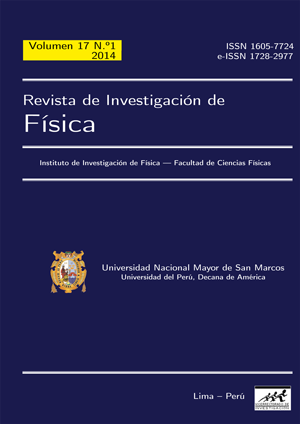Strategy for the estimation of the scattering and absorption coefficients in one-dimensional participating media
DOI:
https://doi.org/10.15381/rif.v17i01.8674Keywords:
inverse problem, Bregman distance, heat transfer, entropy Havdra - Charvát.Abstract
In this work a strategy for the estimation of absorption and scattering coefficients in one-dimensional participating media is presented. Media are considered with the absorption coefficient in the range [0.1 to 1.0] and the scattering coefficient between [0.1-1.0]. The direct problem was solved with the discrete ordinates and finite difference methods. In order to solve the inverse problem the following strategy consists of (a) find the absorption coefficient considering the scattering coefficient with an approximate value. 0.01, (b) find the scattering coefficient value using the absorption coefficient estimated in (a). The error function is defined as the difference between the measured value by the detector and the calculated by the direct problem. The algorithm used for the solution is to minimize the Bregman distance subject to the error function. Bregman distance was constructed with a related function to the entropy of Havdra-Charvát. Cases random noise tests to 2% in the measured data are presented. In order to find the best estimate we adopt as a criterion for comparison of the relative standard quadratic error.Downloads
Published
Issue
Section
License
Copyright (c) 2014 M. Berrocal Tito, R. F. Carita Montero, J. A. Bravo, A. J. da Silva Neto

This work is licensed under a Creative Commons Attribution-NonCommercial-ShareAlike 4.0 International License.
THE AUTHORS RETAIN THEIR RIGHTS:
a. The authors retain their trademark and patent rights, as well as any process or procedure described in the article.
b. The authors retain the right to share, copy, distribute, perform and publicly communicate the article published in the Revista de Investigación de Física (for example, place it in an institutional repository or publish it in a book), with an acknowledgment of its initial publication in the Revista de Investigación de Física.
c. The authors retain the right to make a subsequent publication of their work, to use the article or any part of it (for example: a compilation of their works, notes for conferences, thesis, or for a book), provided that they indicate the source. of publication (authors of the work, journal, volume, number and date).














